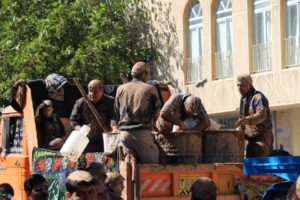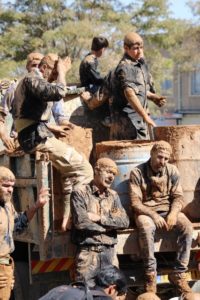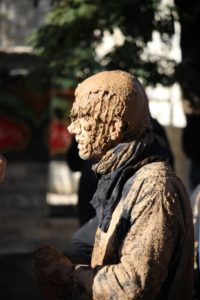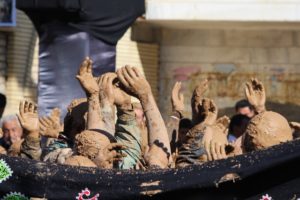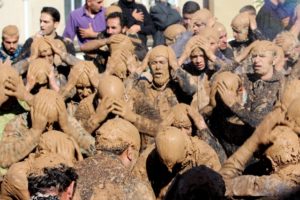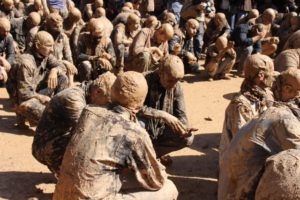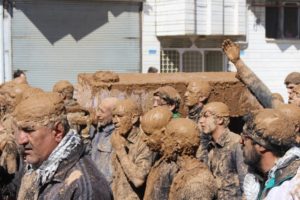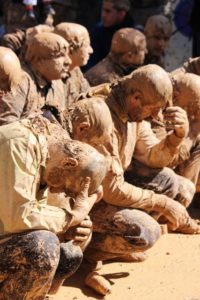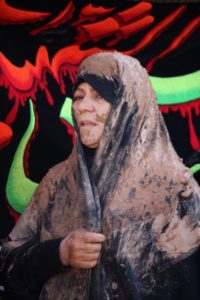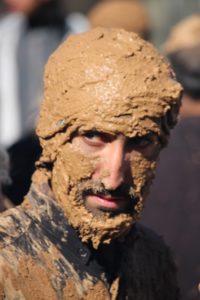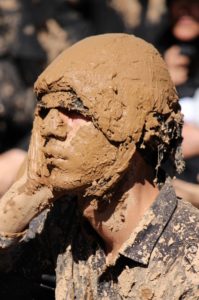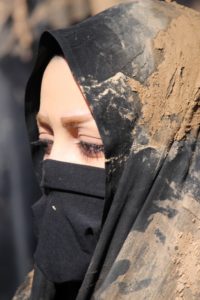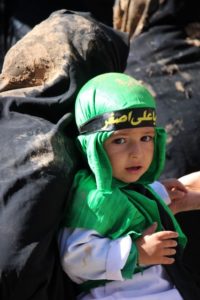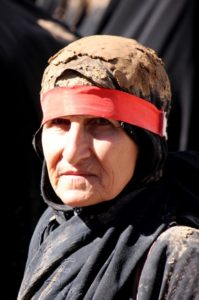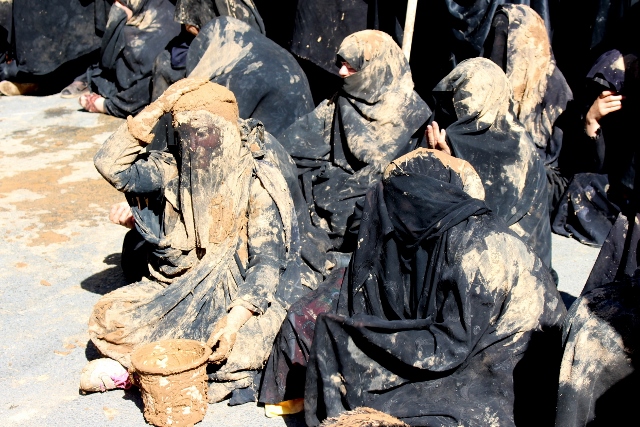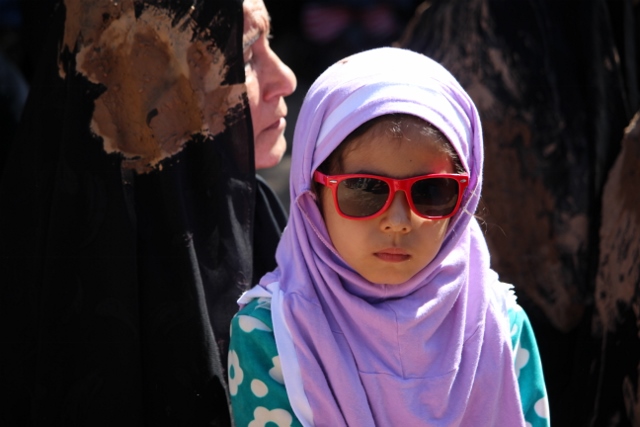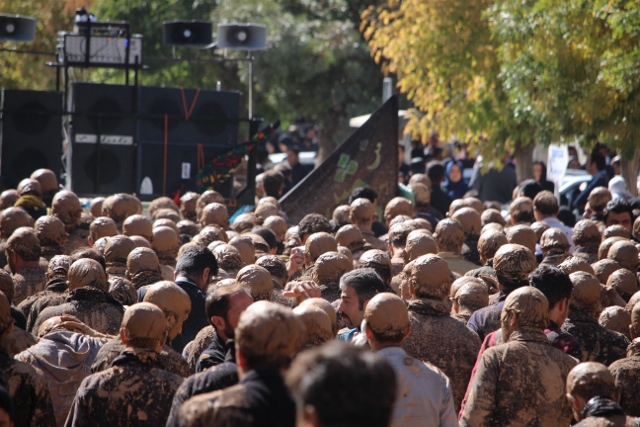(this is a continuation of the previous entry)
The next morning, Ashura, the procession starts early, around nine, but people have been preparing already for a while (and so has the municipality: the streets are clean again, rubbish has beeen collected, the blood has been washed away). In addition to the days before, in front of some of the mosques trucks have been mobilised with dry clay and water, which is being mixed into mud. Men, and also some women, this time, come forward to have their heads covered with the stuff, and sometimes also their cloths. Others go around with buckets, and invite people to help themselves, something many mourners indeed do. By the handsful. When it is time to line up for the procession, whole groups have formed, all mud-covered, who take their place – women, their chadors clad with mud, at the back. These are the only women we see in the parade, the rest is still all men. And round and round it goes, once more, for hours on end, enacting the same rituals as the days before, with never failing stamina. To be sure, there is nothing fundamentalist is this, just an incredible personal commitment, I have no other words for it. A deeply moving, emotional experience, this unique expression of faith – even though it is not mine.
next: Zanjan
